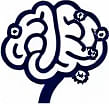Transformational Leadership as a Mental Model
 by Shanie Goodwin
by Shanie Goodwin
Transformational leadership inspires change and growth by motivating individuals to exceed their own expectations. This mental model emphasizes key elements like vision and empowerment, making it essential for business and personal development. Explore its practical applications here.

Transformational leadership serves as a key mental model that focuses on fostering innovation and personal growth within teams and organizations. This approach transformational leadership encourages leaders to connect with their followers on a deeper level, promoting mutual development.
One core aspect involves building a clear vision. Leaders using this model articulate goals that resonate with their team members, helping to align efforts toward shared objectives. For instance, in business settings, it drives performance by inspiring employees to think beyond routine tasks.
Another element is intellectual stimulation. This part of the model pushes individuals to question assumptions and explore new ideas. intellectual stimulation can lead to creative solutions, particularly in fields like psychology where problem-solving is vital.
Individualized consideration is equally important. Leaders provide support and mentorship tailored to each person's needs, enhancing overall team dynamics. In cognitive development, this means recognizing different learning styles and offering guidance accordingly.
Applications in Business
In business, this mental model proves effective for driving change. Leaders adopt strategies that motivate teams to innovate and adapt. For example, companies facing market shifts often rely on leaders who embody these principles to guide transitions smoothly.
business strategies benefit from this approach as it builds a culture of trust and collaboration. Teams led in this way tend to show higher engagement and productivity, as seen in various industries where employee satisfaction correlates with leadership style.
Role in Psychology and Cognitive Development
From a psychological perspective, this model influences how people perceive their capabilities. It encourages self-efficacy, where individuals believe in their ability to succeed. This ties into cognitive development by promoting lifelong learning and skill enhancement.
Professionals in psychology note that such leadership aids in building resilience. By fostering an environment of encouragement, it helps individuals overcome challenges and develop mentally. cognitive development through this model involves activities that stimulate critical thinking and emotional intelligence.
Practical Implementation
To apply this model, start by assessing your current leadership practices. Identify areas where you can inspire others more effectively, such as through regular feedback sessions. In professional settings, this might involve setting up workshops that focus on team building.
For curious individuals and lifelong learners, practicing this model can begin with self-reflection. Consider how your actions influence those around you and seek ways to provide meaningful support. In educational contexts, teachers might use it to motivate students, leading to better outcomes.
Benefits and Challenges
The benefits include enhanced team morale and innovation. Organizations often see improved results when leaders prioritize these elements. However, it requires commitment and authenticity from the leader.
Challenges may arise in maintaining consistency, especially in larger groups. Despite this, the long-term advantages for personal and professional growth make it worthwhile.
In summary, this mental model offers a pathway for effective leadership that supports both individual and collective progress. By integrating its principles, anyone can contribute to positive change in their environment.
- Key components: Vision building, intellectual stimulation, individualized consideration.
- Ideal settings: Business teams, educational environments, personal development.
- Outcomes: Increased innovation, better cognitive growth, stronger relationships.
